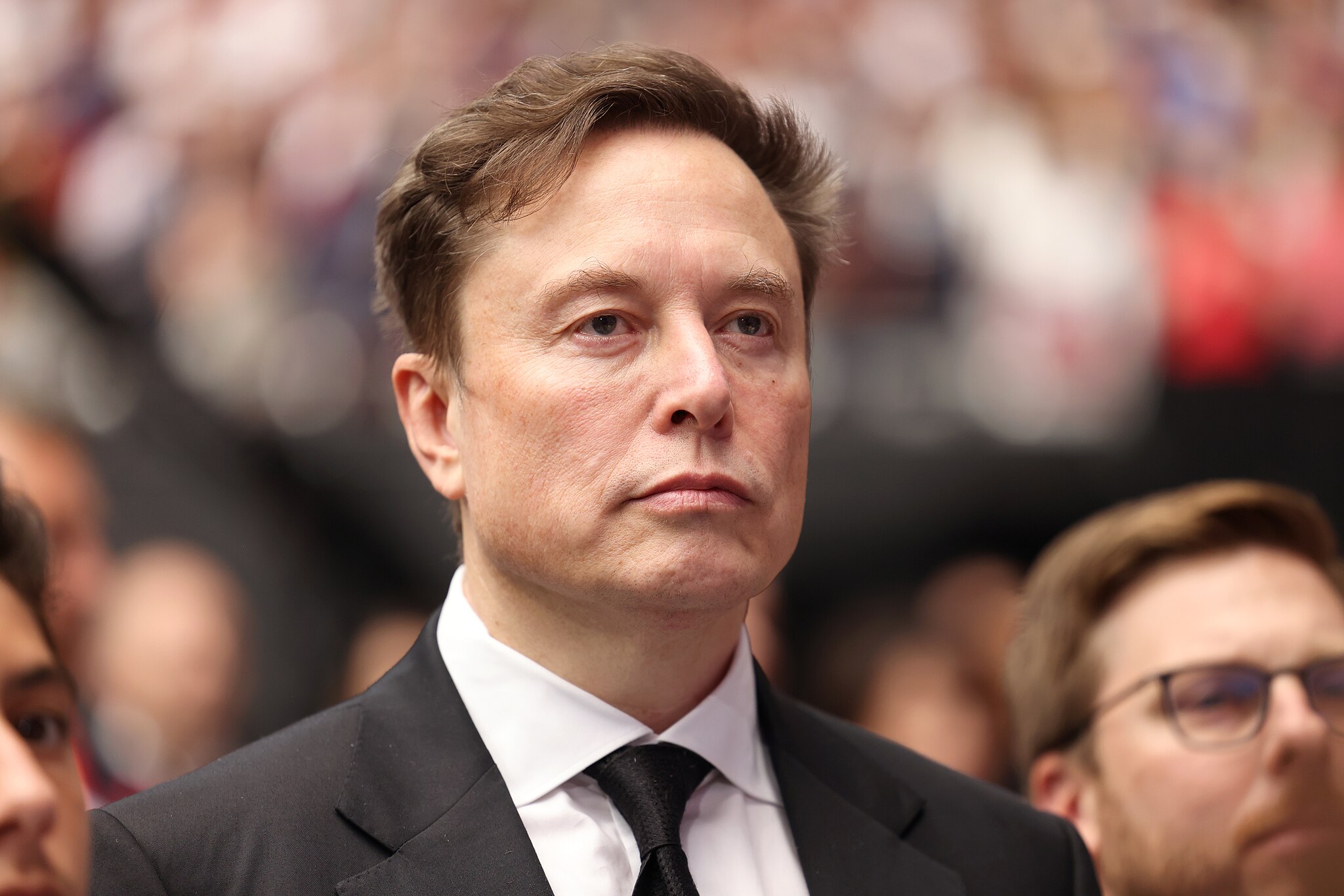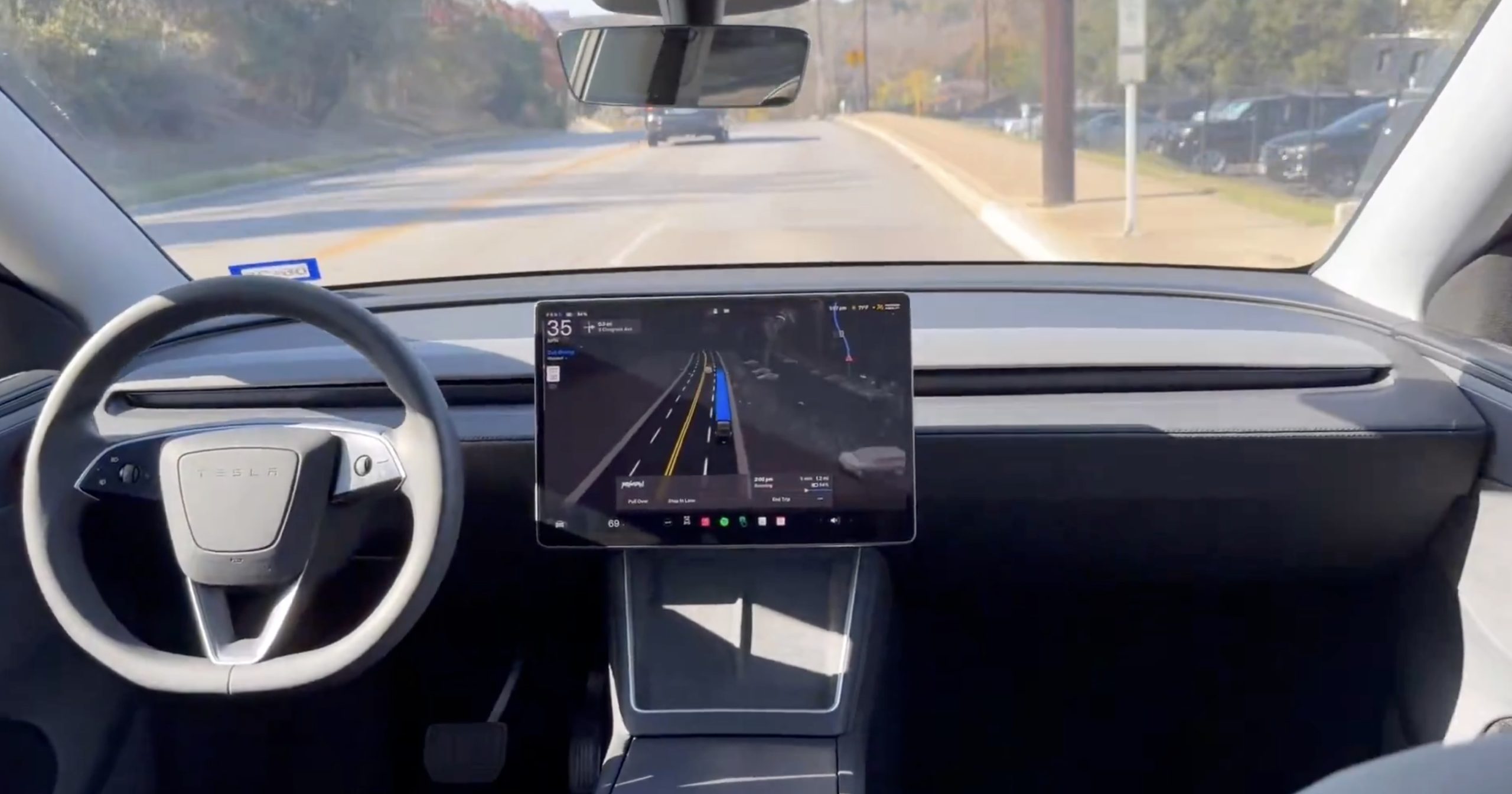Elon Musk
Tesla ‘activist shareholders’ sue company and Elon Musk for Robotaxi rollout
Tesla’s activist shareholders are coming after the company, claiming it misled investors about the Robotaxi rollout.

Tesla’s “activist shareholders” seem to be one of the biggest threats to the company and its CEO, Elon Musk, who has spoken extensively about them in recent times. They’re up to their latest bit of work against the company, suing both Tesla and Musk, accusing them of securities fraud by alleging they concealed “significant risk” over the Robotaxi launch in Austin, Texas.
On Monday night, a group of shareholders sued Tesla and Musk in a proposed class action lawsuit in Texas federal court. They claim Tesla misled investors about the safety of the vehicles used in the Robotaxi rollout in Austin, which started on June 22.
The suit indicates that videos show the vehicles “speeding, exhibiting sudden braking, driving over a curb, entering the wrong lane, and dropping passengers off in the middle of multilane roads.” Reuters first reported on the lawsuit.
The plaintiffs are seeking damages for shareholders between April 19, 2023, and June 22, 2025.
Tesla’s Robotaxi platform has been operating for less than two months, and the company has already expanded its geofence in Austin twice.
🚨 Tesla Austin Robotaxi geofence sizes (in square miles):
Initial: 6/22 – ~20 square miles
First Expansion: 7/14 – ~42 square miles
Second Expansion: 8/3 – ~80 square miles pic.twitter.com/IwnvSJseE4
— TESLARATI (@Teslarati) August 3, 2025
In the roughly six weeks that Robotaxi has been operational, Tesla has only had one incident reported to the Austin Government, and it was a “Safety Concern” in June 2025. Since July 2023, which is when autonomous vehicle operation began in Austin, 130 incidents have been reported. AV Ride, Cruise, Waymo, and Zoox also operate in Austin.
Waymo has the most incidents with 73. Its first was in June 2024 when a unit blocked traffic.
Activist Shareholders
Musk has warned that activist shareholders are potentially dangerous to both Tesla and his position as CEO. He recently spoke about them during the Q2 Earnings Call regarding his stake in the company:
“That is a major concern for me, as I’ve mentioned in the past. I hope that is addressed at the upcoming shareholders meeting. But, yeah, it is a big deal. I want to find that I’ve got so little control that I can easily be ousted by activist shareholders after having built this army of humanoid robots. I think my control over Tesla, Inc. should be enough to ensure that it goes in a good direction, but not so much control that I can’t be thrown out if I go crazy.”
Tesla’s Board yesterday made an attempt to help secure Musk’s stake by offering him a massive 96 million share pay package of restricted stock. It will only help his stake in the company bump up slightly to 14.6 percent from 12.9 percent.

Elon Musk
Tesla’s Elon Musk accepts invitation to Israel’s Smart Transportation Conference
The announcement was shared by the Israeli Prime Minister in a post on social media platform X.

Elon Musk has reportedly accepted an invitation from Israeli Prime Minister Benjamin Netanyahu to participate in the country’s Smart Transportation Conference in March 2026.
The announcement was shared by the Israeli Prime Minister in a post on social media platform X.
A call and an invitation
Netanyahu posted on X about Musk, stating in Hebrew: “Last night, I held a joint conference call from Florida with entrepreneur Elon Musk, Minister of Transportation Miri Regev, and the head of the National AI Headquarters, Erez Askal. In the framework of the conversation, Musk responded to my invitation and Minister Regev’s invitation to participate in the Smart Transportation Conference that will be held in March.”
Netanyahu added that he and Musk discussed continuing initiatives such as the promotion of autonomous vehicle laws and the boosting of AI technologies in Israel. This, according to the Prime Minister, is aimed at making the country a global leader in emerging technologies.
“Additionally, we discussed the continuation of collaborations with Tesla and the promotion of the law pertaining to autonomous vehicles. I spoke at length with Musk about promoting and developing artificial intelligence technologies in Israel, and I said in our conversation: We intend to catapult Israel and turn it into a global leader in the field, just as we did in cyber and other technologies,” Netanyahu added.
Tesla FSD’s upcoming rollout in Israel
Elon Musk’s upcoming conference appearance in Israel could hint at Tesla’s upcoming rollout of FSD and its Robotaxi service in the country. Previous reports have hinted that FSD is nearing regulatory approval in Israel, following strong advocacy from local owners and direct intervention from the government.
Nearly 1,000 Tesla drivers petitioned authorities, highlighting FSD’s potential to enhance road safety. Transport and Road Safety Minister Miri Regev responded positively on X, writing “I’ve received the many referrals from Tesla drivers in Israel! Tesla drivers? Soon you won’t need to hold the steering wheel.”
Minister Regev has instructed the ministry’s Director-General to accelerate the approval process, including necessary tests. A dedicated working group, led by Moshe Ben-Zaken, is also coordinating with regulatory and safety agencies to meet international standards.
Elon Musk
Elon Musk and Tesla AI Director share insights after empty driver seat Robotaxi rides
The executives’ unoccupied tests hint at the rapid progress of Tesla’s unsupervised Robotaxi efforts.

Tesla CEO Elon Musk and AI Director Ashok Elluswamy celebrated Christmas Eve by sharing personal experiences with Robotaxi vehicles that had no safety monitor or occupant in the driver’s seat. Musk described the system’s “perfect driving” around Austin, while Elluswamy posted video from the back seat, calling it “an amazing experience.”
The executives’ unoccupied tests hint at the rapid progress of Tesla’s unsupervised Robotaxi efforts.
Elon and Ashok’s firsthand Robotaxi insights
Prior to Musk and the Tesla AI Director’s posts, sightings of unmanned Teslas navigating public roads were widely shared on social media. One such vehicle was spotted in Austin, Texas, which Elon Musk acknowleged by stating that “Testing is underway with no occupants in the car.”
Based on his Christmas Eve post, Musk seemed to have tested an unmanned Tesla himself. “A Tesla with no safety monitor in the car and me sitting in the passenger seat took me all around Austin on Sunday with perfect driving,” Musk wrote in his post.
Elluswamy responded with a 2-minute video showing himself in the rear of an unmanned Tesla. The video featured the vehicle’s empty front seats, as well as its smooth handling through real-world traffic. He captioned his video with the words, “It’s an amazing experience!”
Towards Unsupervised operations
During an xAI Hackathon earlier this month, Elon Musk mentioned that Tesla owed be removing Safety Monitors from its Robotaxis in Austin in just three weeks. “Unsupervised is pretty much solved at this point. So there will be Tesla Robotaxis operating in Austin with no one in them. Not even anyone in the passenger seat in about three weeks,” he said. Musk echoed similar estimates at the 2025 Annual Shareholder Meeting and the Q3 2025 earnings call.
Considering the insights that were posted Musk and Elluswamy, it does appear that Tesla is working hard towards operating its Robotaxis with no safety monitors. This is quite impressive considering that the service was launched just earlier this year.
Elon Musk
Starlink passes 9 million active customers just weeks after hitting 8 million
The milestone highlights the accelerating growth of Starlink, which has now been adding over 20,000 new users per day.

SpaceX’s Starlink satellite internet service has continued its rapid global expansion, surpassing 9 million active customers just weeks after crossing the 8 million mark.
The milestone highlights the accelerating growth of Starlink, which has now been adding over 20,000 new users per day.
9 million customers
In a post on X, SpaceX stated that Starlink now serves over 9 million active users across 155 countries, territories, and markets. The company reached 8 million customers in early November, meaning it added roughly 1 million subscribers in under seven weeks, or about 21,275 new users on average per day.
“Starlink is connecting more than 9M active customers with high-speed internet across 155 countries, territories, and many other markets,” Starlink wrote in a post on its official X account. SpaceX President Gwynne Shotwell also celebrated the milestone on X. “A huge thank you to all of our customers and congrats to the Starlink team for such an incredible product,” she wrote.
That growth rate reflects both rising demand for broadband in underserved regions and Starlink’s expanding satellite constellation, which now includes more than 9,000 low-Earth-orbit satellites designed to deliver high-speed, low-latency internet worldwide.
Starlink’s momentum
Starlink’s momentum has been building up. SpaceX reported 4.6 million Starlink customers in December 2024, followed by 7 million by August 2025, and 8 million customers in November. Independent data also suggests Starlink usage is rising sharply, with Cloudflare reporting that global web traffic from Starlink users more than doubled in 2025, as noted in an Insider report.
Starlink’s momentum is increasingly tied to SpaceX’s broader financial outlook. Elon Musk has said the satellite network is “by far” the company’s largest revenue driver, and reports suggest SpaceX may be positioning itself for an initial public offering as soon as next year, with valuations estimated as high as $1.5 trillion. Musk has also suggested in the past that Starlink could have its own IPO in the future.








